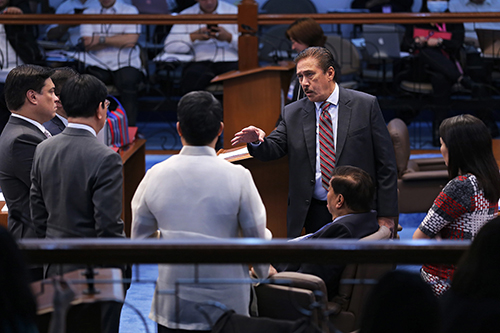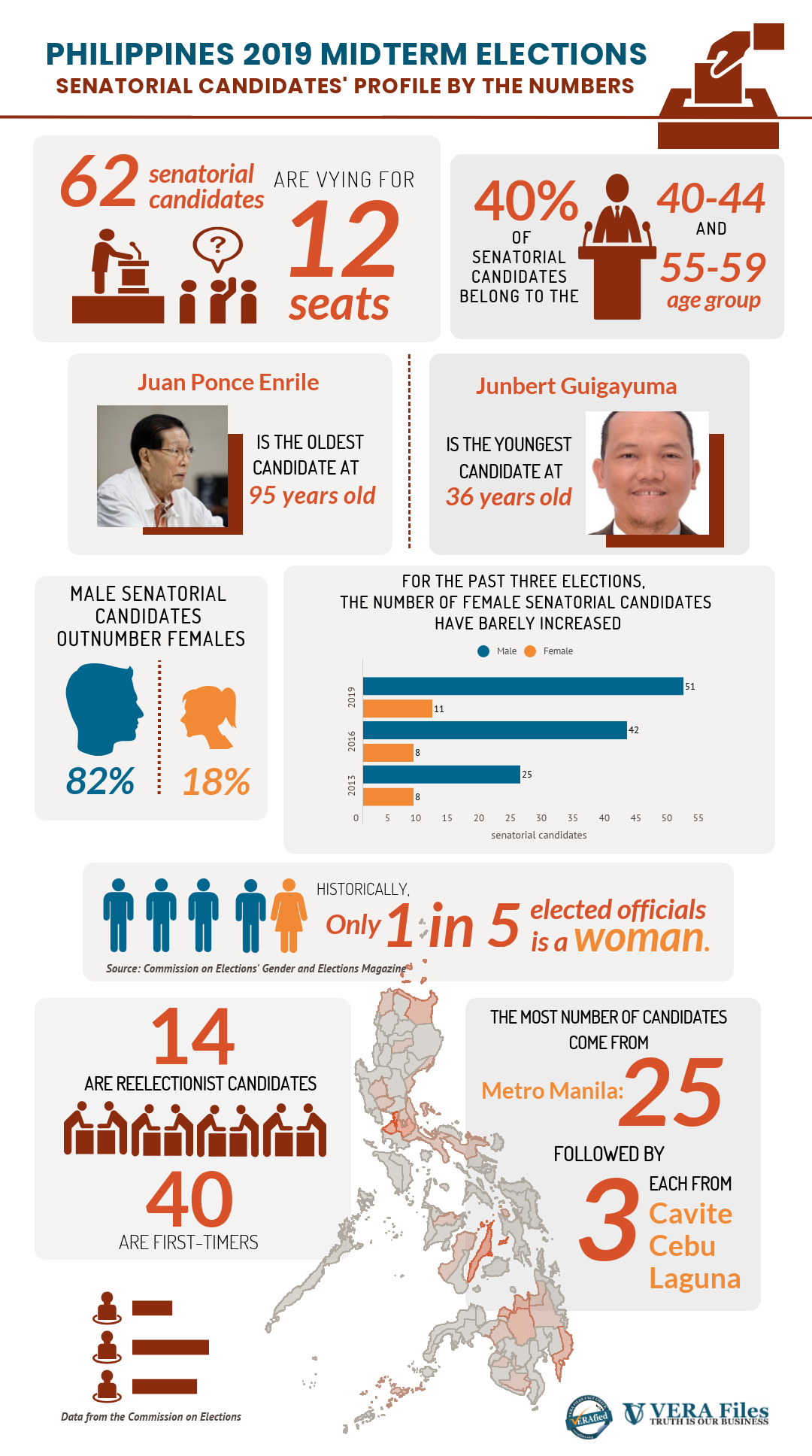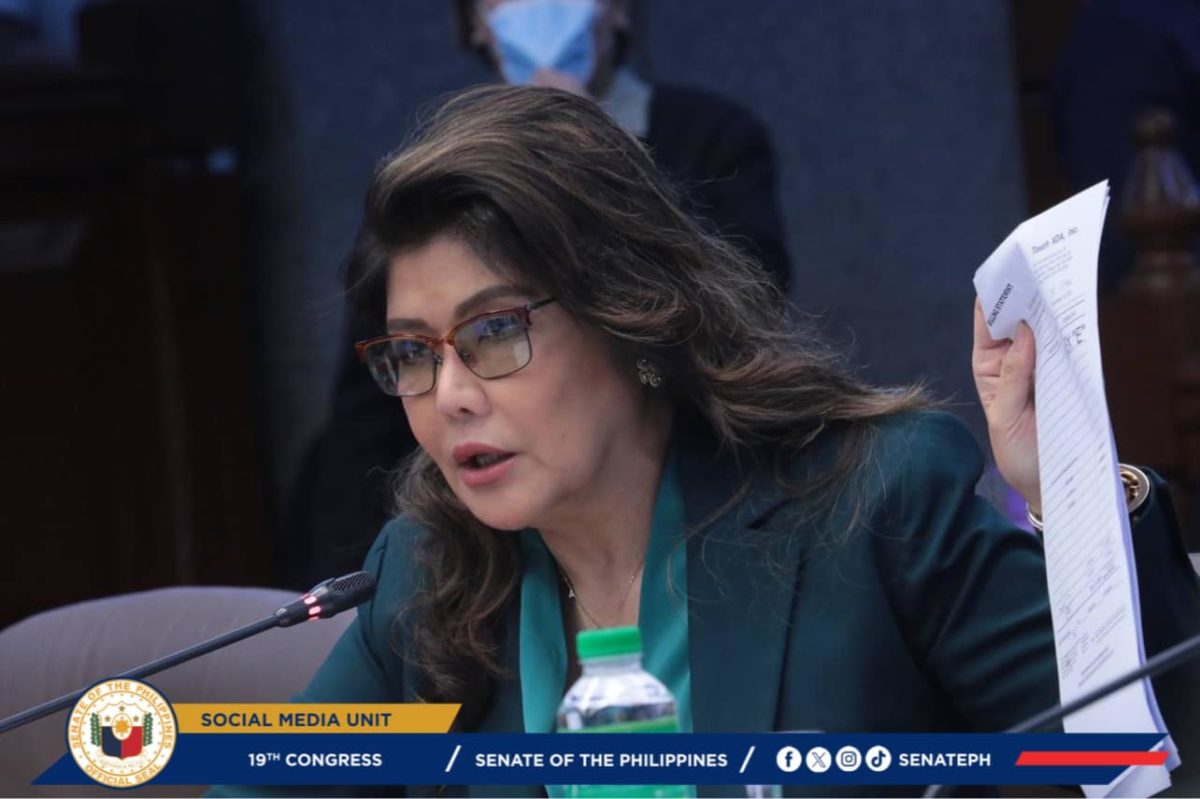Sen. Imee Marcos and Senate President Vicente “Tito” Sotto III had a brief disagreement on the adoption of the Senate resolution asking President Rodrigo Duterte to rethink the scrapping of the Visiting Forces Agreement (VFA) with the United States.
Marcos, who was initially recorded to have voted in favor of the resolution, moved to change her vote to abstain, saying there was “no quorum” and that she was “not aware” that a vote was taking place. Sotto, on the other hand, said Marcos’ original vote was valid since the quorum was based on the attendance taken prior to the vote.
Marcos eventually settled for manifesting that she would have abstained “had [she] been aware” of the motion to approve the resolution.
Senators Francis Tolentino, Cynthia Villar, Pia Cayetano, Christopher Lawrence “Bong” Go, and Bong Revilla Jr. also said they would have done the same. Senator Ronald “Bato” Dela Rosa was the only one who had abstained from voting on the day the resolution was passed.
Here are three things you need to know on how the Senate votes.
1. What are the instances that require a vote?
Senators vote on four types of legislative measures:
Senate Resolution 312, the measure calling on Duterte to reconsider his decision on the termination of the U.S. VFA, is considered a simple resolution.
Senators also vote for their officers, including the Senate president.
Moreover, the body is mandated under the 1987 Constitution to vote on: specific matters, including the ratification of treaties, and, jointly with the House of Representatives, on the declaration of a state of war; the grant of emergency powers to the president; the grant of amnesty; the revocation or extension of martial law; whether or not the president can still perform his duties; and a Constitutional convention.
The Constitution also requires the Senate to try and decide, by vote, on all cases of impeachment.
2. How do senators cast their votes?
There are two ways for the Senate to vote on a measure under Senate rules: viva voce (orally) and roll call (nominally).
In a viva voce vote, the Senate president, or whoever is presiding the session, first asks all those present if they are for a particular measure. Those in favor may raise their hands or say so, and their votes are considered. The same is then done for those against the measure.
In Marcos’ case, Sotto said she should have abstained from the resolution when the vote was called, like what Dela Rosa did, and advised her to “stay in hall” next time. Marcos insisted that she was physically present at the time, but was not aware that the vote had been called.
A nominal vote, on the other hand, is done by asking each senator present, in alphabetical order, if he/she is for or against a measure.
Under Section 115 of the current Senate rules, a nominal vote is required on the following matters:
-
- adopting bills or joint resolutions;
- bills or joint resolutions previously vetoed by the president;
- resolutions that involve treaties; and
- if 1/5th of the senators present in the session ask for it.
The votes of senators absent from the session the moment a vote is called do not count. The Senate president, for his part, is not obliged to vote unless his is decisive.
Section 118 under the voting rules of the Senate states that “no senator shall be permitted to vote on any measure after the president has announced the result.”
3. What is a quorum and why is it important?
Except for the election of Senate officers — where all elected senators are required to vote — the attendance of majority of the members, or at least 13 senators, constitutes a quorum, and thus makes the vote official, based on Senate rules.
Voting on a measure can be suspended only if the lack of the quorum is raised to the plenary session’s presiding chair of the plenary session, usually the Senate president.
A day after Senate Resolution 312 was adopted, Marcos questioned the validity of the vote since, she said there were “only eight senators” in the hall when the vote was taken, thus lacking a quorum.
Senate Majority Leader Miguel Zubiri, however, said that a quorum does not mean all members of the Senate are physically present in the hall, and may be based on the attendance taken before the session started.
“In parliamentary practice all over the world including in the House of Representatives and the Senate, [there is] what we call a continuing quorum. When you establish the quorum in the start of the session, until otherwise questioned by a member, you continue your business of the day all the way to the end of the last hour.”
Source: Senate of the Philippines, Senate Session No. 53, Feb. 11, 2020, watch from 44:14 to 44:35
The Senate can establish, change, and adopt its own rules of procedure.






